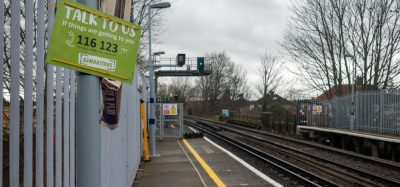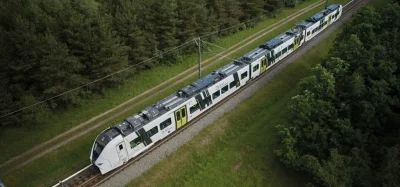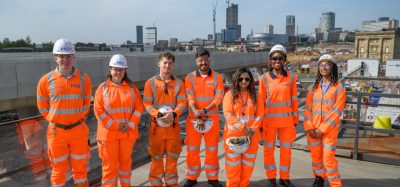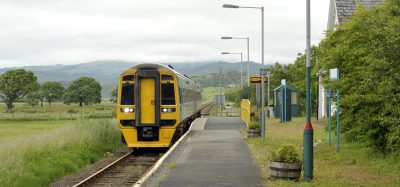Working towards the railway of 2030
Posted: 27 November 2007 | | No comments yet
Compare our European railway network today with that of 25 years ago. Safety and punctuality have continued to improve, however, traffic growth has been patchy and costs have risen enormously. Meanwhile there have been revolutionary changes in the communications and transport environment. Mobile phones, internet and e-mail didn’t exist 25 years ago. There were no low cost airlines from a convenient regional airport. Cars used leaded fuel; air bags, ‘sat nav’ and air conditioning were unknown. The world around us is changing much faster than we are!
Compare our European railway network today with that of 25 years ago. Safety and punctuality have continued to improve, however, traffic growth has been patchy and costs have risen enormously. Meanwhile there have been revolutionary changes in the communications and transport environment. Mobile phones, internet and e-mail didn’t exist 25 years ago. There were no low cost airlines from a convenient regional airport. Cars used leaded fuel; air bags, ‘sat nav’ and air conditioning were unknown. The world around us is changing much faster than we are!
Compare our European railway network today with that of 25 years ago. Safety and punctuality have continued to improve, however, traffic growth has been patchy and costs have risen enormously. Meanwhile there have been revolutionary changes in the communications and transport environment. Mobile phones, internet and e-mail didn’t exist 25 years ago. There were no low cost airlines from a convenient regional airport. Cars used leaded fuel; air bags, ‘sat nav’ and air conditioning were unknown. The world around us is changing much faster than we are!
Now think forward to 2030. What must our railway system be like if it is to continue to be an integral part of European life? If 2030 seems far in the future, remember that a quarter of a century represents just one cycle of main line renewal of infrastructure and trains. So much of what we are already delivering today will be part of the 2030 railway. Our challenge, whilst meeting today’s targets, is to start building tomorrow’s railway.
Whilst the details of transport markets in 25 years’ time are not known, some trends are already clear. The following are particularly relevant to us:
- The drift of people towards urban living will continue all around Europe
- On average, people will live longer and the majority will be more prosperous. They will have the means and the time to travel more. As a result the demand for travel will grow. But, on average, they will be less agile. They will value reduced journey time and high personal security and will not tolerate inconvenience or poor service. However, there will be an element of the population dependant on convenient transport to achieve social and economic mobility. The pool of younger skilled workers willing to work in difficult conditions on safety critical activities (the very people railways rely on for operation and maintenance), will reduce. Those remaining will secure real wage inflation; this is already happening year by year.
- Energy will be more expensive and all transport systems will need to reduce their energy demand. Customers will take more note of sustainability.
- Private transport will develop technology to maintain its attractiveness.
Governments are unlikely to maintain current levels of financial support if railways serve a declining proportion of an expanding market.
Some of these trends play to our strengths, particularly the expected growth in demand for movement from people based together in centres. But there are many threats, even with energy usage. Our trains have been getting heavier per seat whilst cars have been getting lighter. But at least we can set out how we must change to survive and prosper.
To continue playing a central part in the economic life of Europe in 25 years time, we must be pursuing actions and policies now to re-engineer our railway as part of a complete transport system which is:
- Door to door with reduced ‘whole journey’ time
- Available where and when people or freight want to use it
- On-time with guaranteed inter-modal connections
- Very low maintenance
- Energy efficient, maximising sustainability
- Affordable
To be attractive to our users we must consider their expectations from door-to-door. They will not wait in the rain and wind for poor connections between trains, buses, taxis, trams or cars for the next leg of their journey. Nor will they struggle up steps and around poorly laid out, insecure, stations built a century ago. Perhaps one of our biggest challenges is to re-engineer all our stations – not just the landmark city centre ones – to turn them into highly efficient and friendly interchanges. Many of us have made a start, but today’s solutions are too expensive and of mixed quality. In the UK, we are creating modular station designs capable of being factory built and installed quickly at an affordable price; for a building programme to service new townships.
The rapidly changing world of telecoms will enable us to transform the way information is given to our future passengers and help create the ‘whole journey’. By 2015, booking offices will become history as people buy journeys by internet or mobile telephony and then be guided through the station up to the right train door for their reserved seat by personal devices off satellite positioning systems. This not only improves the attractiveness of the interchange but gives the opportunity for shorter station stops, or ‘dwell times’.
However, this is only touching on the potential which advances in telecoms engineering, and its convergence with information technology are bringing. Tracking and tracing of goods, giving complete real-time information on security, integrity and location of individual packages as well as container or wagonloads, is an affordable reality now. Radio based scanning of passive microchips is quickly making barcode technology obsolete in the retail industry. Scanning technologies may be used today to follow the movement of individual people through our railway systems by tracking any mobile phone SIM card, or credit card micro-chip, with precise accuracy. So we have the possibility of totally ‘ticketless’ travel without barriers or need for specific revenue protection simply by scanning personal details as people move through the system. The implications for privacy are obvious. The safeguards necessary for people to accept this type of monitoring technology will be researched at E.U. level shortly.
With fewer, more expensive, skilled workers, we have to design every part of our system for genuinely low maintenance whilst improving reliability and safety integrity. In Network Rail, a central strategy for the last three years has been to move from ‘find and fix faults’ maintenance to ‘predict and prevent’ management. For this to happen, regular objective measurement of asset condition is essential which can only be achieved through automated systems. We cannot afford to use scarce, skilled people for this repetitive task. Hence the move into train-based technology to measure the infrastructure supported by centralised systems to diagnose trends and patterns. We are now going further with our ‘Intelligent Infrastructure’ project to equip our bridges and earthworks with automatic condition monitoring systems using a new generation of technology emerging from leading Universities. Two examples show the potential, and challenges still to overcome, of this approach.
Digital image recognition by computer technologies, developed in the defence industry, offers the opportunity to replace physical routine inspection, precisely the type of repetitive work humans are poor at. We can train the computer to filter potential defects and changes from millions of images and present them to the skilled technician for assessment and decision making, which is the type of work people are good at. The same scanning technology referred to earlier has the potential to detect relative movement in structures and earthworks using embedded sensors. Again the principle is to replace expensive, repetitive human inspection and provide objective information to the engineer.
The changing role of the human will not just ‘happen’. We are at the forefront of the science of human performance – Ergonomics – as re-designing the human role, and the way the human interacts with the system becomes as important as ‘conventional’ engineering design.
Despite the number of advances, Infrastructure Engineers still disrupt train services far more than will be acceptable in the future. Many of us rely on single line working or working between trains; which is effective on lines running below capacity. As we are successful in running more trains, we must re-engineer our processes to maintain and renew the railway system without interrupting traffic flows. We have to become invisible to passenger and freight users. The ‘just-in-time’ initiative used on the Swiss and increasing other railways for switch replacement is an excellent example of how we need to change our thinking. It allows major activity to be conducted swiftly and to a very high quality, in a highly mechanised system. This is influencing us in the UK to develop a modular approach to all major infrastructure systems including signalling control, power, track and structures. As with stations, we seek factory build quality and speed and economy of installation through standardisation of designs.
Increasing the credentials of railways in the environmental sustainability area is important. The issues of energy usage have received considerable attention in countries where renewable energy – especially hydroelectric power – has been harnessed. Limited attention has been paid to use of waste or recycled materials for railway infrastructure. However, in the UK we are about to use recycled crushed glass to replace graded sand as a track foundation layer and trials are being followed for the adoption of recycled plastic waste to create sleepers for, at least, regional and commuter routes.
Achieving reduced journey times whilst consuming less energy is a challenge. One key action is to develop much lighter trains than today. In that way, journey times can be reduced through improved acceleration and braking rather than higher maximum speed, which is only briefly attained between stations, whilst at the same time using less energy.
There are four main ways to make trains lighter, per seat. One is better internal design with greater use of new materials – carbon fibre is becoming widely used in cars and aircraft for example. The second is continuing electrification of those networks where trains still carry the weight penalty of their own engines. Then we need to think radically.
We need to move further from crash resistance of the train to collision avoidance in the infrastructure. Modern train protection technology controls train-to-train collision risk. The urgent priority now is level crossings and line side security. The best level crossing is one that has been eliminated. We have asked our civil engineers to come up with modular bridges which can be installed at low cost and with little train service interruption. Where this is impracticable we have tasked our signal engineers to develop dependable obstruction detection systems; and part of the Intelligent Infrastructure programme is detection of animal or human intrusion, or rock fall.
We need to reduce vehicle bogie and suspension weight and the way to do that is to improve the track. Our Austrian colleagues have been at the forefront of justifying higher track quality to reduce life-cycle costs. Now there is another reason to follow their example. Higher track quality permits lower train weight, leading to less energy use and reduced journey time – a virtuous chain.
We have to do more than control weight, however, if we are to produce a truly lower maintenance railway system. Since the realisation of the significance of rolling contact fatigue at the wheel rail interface, a huge research effort has developed our understanding of the impact of train suspension and stiffness design. We have seen in the UK that a modern train design has increased the amount of rolling contact fatigue by almost an order of magnitude over that of a 30 year old train. We must bring our track and vehicle engineers together to optimise the system and greatly reduce the expensive and disruptive infrastructure maintenance activities of rail management, such as grinding.
To accept growth we must improve capacity. This is perhaps the biggest challenge because the affordable solution is not wholescale building of new lines. However, the problem is often confined to conflicting junctions and stations as on the open line, between is not running to capacity. Our (light weight) train and track designs must aid throughput at stations to reduce dwell time and, of course, this also improves end-to-end journey times for our users. Our next step is to design a modular flyover to eliminate junction conflicts in an easy, affordable way.
Other components of a higher capacity railway include uniform performance trains running to standard service patterns with maximum segregation between long distance, interregional, suburban and local sectors. We need to re-think how we provide for expanding freight services. Capacity optimisation will demand not that freight moves from passing loop to passing loop with all the extra high maintenance trackage and systems that implies. Instead, the freight train simply has to be pathed between a passenger train with all that implies including end to end speed of 140kph freight trains timed to the minute. The cost of highly engineered freight vehicles will be more than offset by increased network capacity and reduced infrastructure provision; a whole system solution.
Our colleagues in Japan have shown the virtue of running a genuinely on time railway and our Swiss friends are close behind. ‘On time’ gives free capacity but it also means assured connections and the ability to have attractive intermodal transfer at our stations – another virtuous chain.
The variation in of what constitutes ‘attractive’ and ‘good value’ to our users for different types of journey also drives us to engineer differences into our designs. In Germany, we have seen the successful development of the ‘train-tram’ concept whereby rail extends its network into urban centres and plays a larger role in solving urban mobility. Our Dutch colleagues have been developing fresh thinking about sustainable regional transport where the key factors, if services are less frequent, are dependability, punctuality and certainty of intermodal connections.
Thinking of our railway as a group of systems optimised for the type of service offered allows greater differentiation of standards, principles and technologies. The track engineer has long understood the opportunity with different components, track construction qualities and maintenance intervention limits. There is considerable potential to extend the thinking into train control and separation appropriate to stopping distances and traffic density. The technology behind ERTMS is appropriate to manage train movement on higher speed railways but may not be appropriate for an urban railway which, if tram train technology is adopted, could be simplified to run on ‘line of sight’ because of very short stopping distances. Meanwhile, we have fitted a combination of GPS, Gyroscope and route mapping equipment to our measurement trains which together give reliable position accurate to 0.5m at 200kph. Does this offer a low cost but still reliable and safe, train detection system for regional rail lines, especially with the introduction of Galileo as a GPS alternative?
So, by around 2030, we have to create an on time railway requiring limited maintenance, using technology to the utmost to achieve those aims at an affordable price. Lightweight trains will run between attractive interchanges which are accessible and rich in real time information. Our forbearers invented an advanced transport system based on the highly efficient steel wheel on steel rail and it will meet Europe’s needs tomorrow – but only if we move fast enough!
Stay Connected with Global Railway Review — Subscribe for Free!
Get exclusive access to the latest rail industry insights from Global Railway Review — all tailored to your interests.
✅ Expert-Led Webinars – Gain insights from global industry leaders
✅ Weekly News & Reports – Rail project updates, thought leadership, and exclusive interviews
✅ Partner Innovations – Discover cutting-edge rail technologies
✅ Print/Digital Magazine – Enjoy two in-depth issues per year, packed with expert content
Choose the updates that matter most to you. Sign up now to stay informed, inspired, and connected — all for free!
Thank you for being part of our community. Let’s keep shaping the future of rail together!








